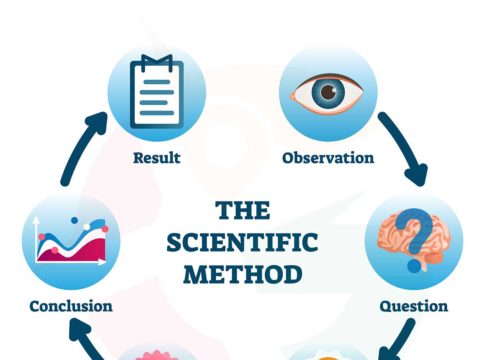Have you ever wondered how scientists make amazing discoveries and solve big mysteries? They use a special process called the scientific method. It’s like a recipe for finding out new things about the world. Let’s dive into the steps of the scientific method and see how it works!
Observation
Everything starts with observation. Scientists look closely at the world around them. They use their senses to notice details and patterns. For example, you might observe that plants grow faster in sunlight than in the shade.
Question
Observations lead to questions. These are the “why” and “how” inquiries that spark curiosity. For instance, you might ask, “Why do plants grow faster in sunlight?” This question sets the stage for the next steps.
Hypothesis
Next, scientists come up with a hypothesis. This is an educated guess or a possible answer to the question. It should be something that can be tested. A hypothesis for our plant question might be, “Plants grow faster because sunlight provides energy for photosynthesis.”
Experiment
Now, it’s time to test the hypothesis with an experiment. Scientists design experiments to see if their guesses are correct. You could grow two sets of plants, one in sunlight and one in the shade, and compare their growth.
Result
During and after the experiment, scientists collect results. They take notes, measure growth, and record all the data. This information helps them see if their hypothesis was right or wrong.
Conclusion
Finally, scientists analyze the results and conclude. This step helps them understand if their hypothesis is correct. If the plants in sunlight grew faster, the hypothesis was supported. If not, they might need to develop a new hypothesis and test it again.
Making Science Fun and Exciting
The scientific method isn’t just for professional scientists. You can use it too! Whether you’re curious about why the sky is blue or how baking soda reacts with vinegar, the scientific method helps you find answers. Here are some fun ways to practice:
- Kitchen Experiments: Mix baking soda and vinegar to see what happens. Ask questions, make guesses, and test your ideas.
- Nature Observations: Watch birds, bugs, or plants in your backyard. Write down what you see and think about why it’s happening.
- Building Projects: Build a small bridge or tower with blocks. Test different designs to see which is strongest and why.
The Importance of Sharing Results
Scientists share their findings with others so that everyone can learn. You can do this too! Write down your experiments, draw pictures, or make charts. Share your discoveries with friends, family, or teachers. This way, you can help others learn and maybe even inspire them to ask questions.
The Cycle of Discovery
Science is a continuous cycle. Even when a hypothesis is proven correct, new questions often emerge, leading to more observations, experiments, and discoveries. This ongoing process helps us understand the world better and develop new technologies and solutions.
The scientific method is a powerful tool for exploring and understanding the world. We can uncover amazing facts and solve intriguing mysteries by making observations, asking questions, forming hypotheses, conducting experiments, gathering results, and drawing conclusions. So, put on your thinking cap, grab a notebook, and start exploring the fascinating world of science today!



